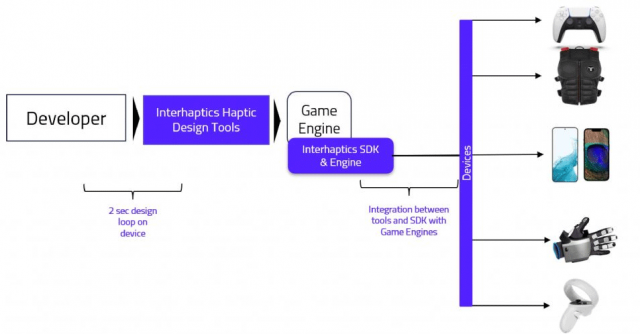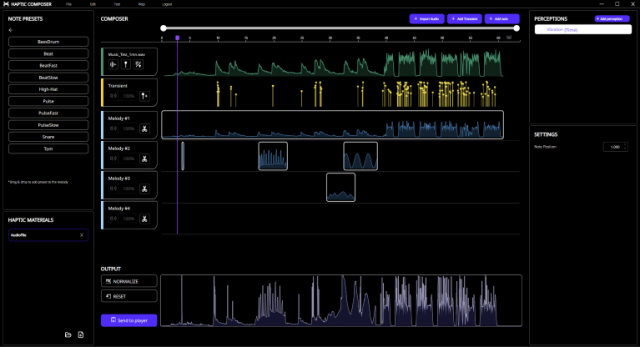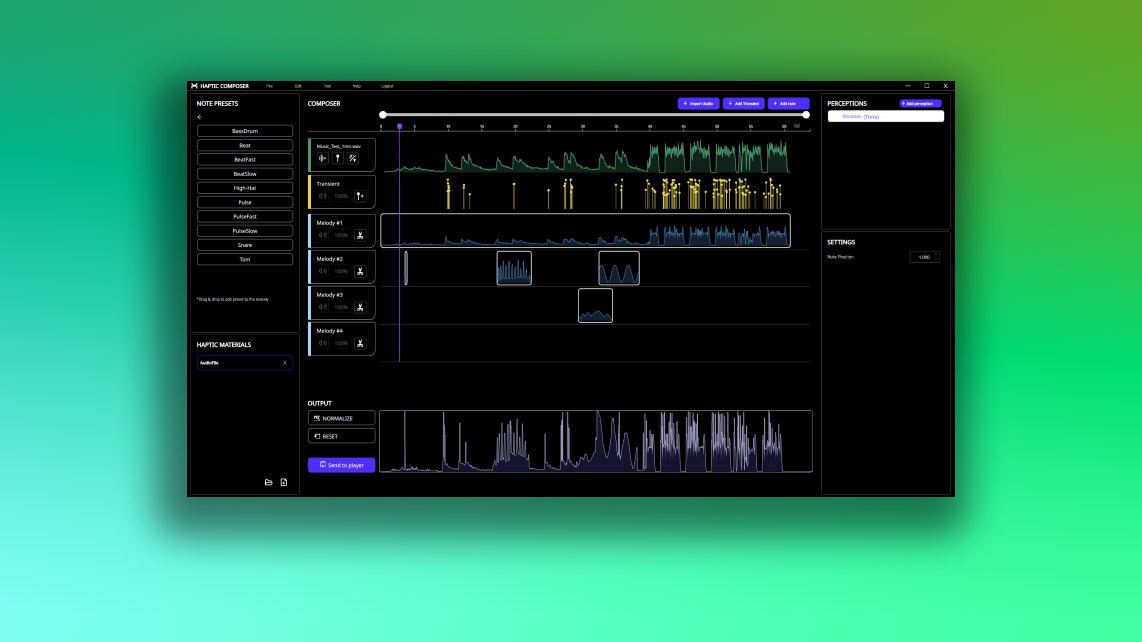Razer, the popular peripheral company, today announced the free release of the Interhaptics haptic authoring tool which is designed to make it faster and easier for developers to create compelling haptic effects for multiple haptic devices.
Razer acquired haptic software tool company Interhaptics earlier this year. Having gotten its start building VR haptic peripherals under the name Go Touch VR, it’s no surprise that the Interhaptics tool is compatible with Meta’s Quest headset controllers, in addition to PS5 and non-VR game platforms like Android and iOS.
Now free for developers to use, the Haptic Composer tool from Interhaptics provides a visual authoring system for developers to build haptic effects for various controllers and devices.
Different devices have different types of haptic engines in them which means different haptic capabilities and different methods for triggering them. Instead of dealing with a different haptic tool for each controller or device, Interhaptics allows developers to build and test their haptic effects through one common interface.
 To author haptic effects, the Haptic Composer allows developers to base the effect on an imported audio file. This works as a starting point for a haptic effect that can match a sound effect played in the game at the same time. From there developers can iterate the haptic effect using keyframe authoring and test on the actual hardware until they get the result they’re looking for.
To author haptic effects, the Haptic Composer allows developers to base the effect on an imported audio file. This works as a starting point for a haptic effect that can match a sound effect played in the game at the same time. From there developers can iterate the haptic effect using keyframe authoring and test on the actual hardware until they get the result they’re looking for.
 Presently Razer says the Interhaptics tool supports Quest, PS5, iOS, and Android. Notably lacking at the moment is support for other major VR controllers like Vive wands and Index controllers, as well as the other major consoles, Xbox and Nintendo Switch. While the Interhaptics tool says it supports PS5’s DualSense controllers, it isn’t clear if this will extend to the upcoming PSVR 2 controllers which include similar haptic capabilities. We’ve reached out to Razer for clarification.
Presently Razer says the Interhaptics tool supports Quest, PS5, iOS, and Android. Notably lacking at the moment is support for other major VR controllers like Vive wands and Index controllers, as well as the other major consoles, Xbox and Nintendo Switch. While the Interhaptics tool says it supports PS5’s DualSense controllers, it isn’t clear if this will extend to the upcoming PSVR 2 controllers which include similar haptic capabilities. We’ve reached out to Razer for clarification.
,
